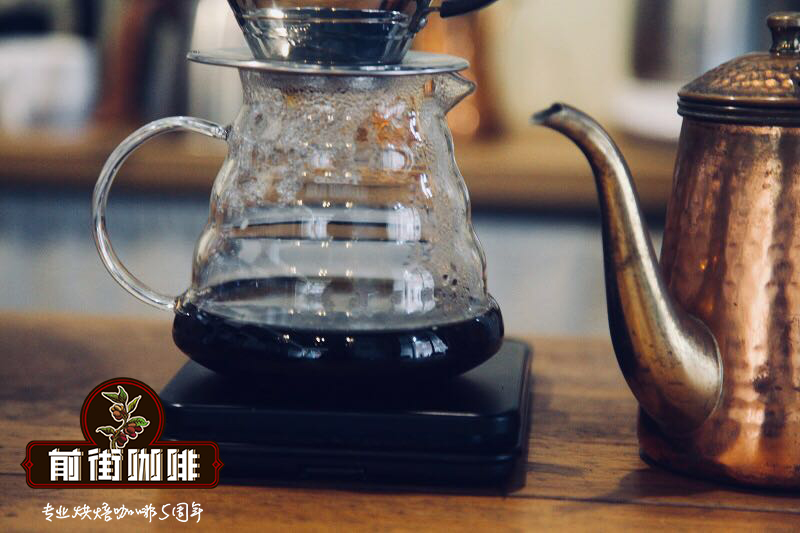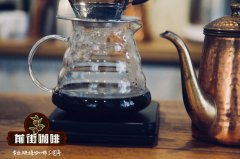What is the structure of coffee fruit? can you eat it? seven structural effects and functions of peeling coffee fruit layer by layer

Professional coffee knowledge exchange more coffee bean information please follow the coffee workshop (Wechat official account cafe_style)
Qianjie-introduction to the structure of coffee beans
The coffee fruit has many layers from the inside to the outside, and the outermost layer is the coffee peel.
Depending on the variety, the color of the coffee pericarp changes from green at the beginning to crimson, yellow, orange, or even pink during maturity. In order to improve the quality of coffee, picking coffee needs to selectively pick the fruit of the best ripening period, and the color of the pericarp is one of the physical characteristics to distinguish the ripening period of different varieties of coffee.
The underlying tissue of the skin is coffee pulp, and the inner layer of the pulp is a layer of honey-like coffee mucus, also known as the pectin layer. Pulp and pectin contain a lot of sugar and authigenic microorganisms, coffee treatment is mainly the use of coffee pulp and pectin microorganisms and sugar to produce fermentation, so as to create a very delicious flavor.
Inside the pectin layer is a layer of "parchment paper" with high hardness, and then inside is the coffee seed wrapped in silver skin. Coffee belongs to dicotyledons, and a coffee fruit often contains two seeds.
Parchment layer and silver skin are protective layers of coffee. When coffee beans are dried to a standard moisture content, parchment will be peeled off by machine during dry processing, and most of the parchment will fall off during baking, leaving only coffee beans.
1:Center cut center cut (two coffee beans are opposite to each other, one of which is cross-sectional)
2:Bean (endosperm) bean (endosperm)
3:Silver skin (testa epidermis) silver coat (seed coat epidermis)
4:Parchment (hull/endocarp) parchment (hull / peel)
5:Pectin layer pectin layer
6:Pulp (mesocarp) pulp (mesocarp)
7:Outerskin (pericarp / exocarp) peel (pericarp / exocarp)
Knowledge: in production, in order to facilitate picking and harvest, farmers will constantly prune and dry the coffee, so that the nutrient content of each coffee tree per unit area is enough to meet the needs of leaves and fruits on the whole tree, thus making the quality better and more stable.
In short: Qianjie is a coffee research hall, happy to share the knowledge about coffee with you, we share unreservedly just to make more friends fall in love with coffee, and there will be three low-discount coffee activities every month. The reason is that Qianjie wants to make more friends drink the best coffee at the lowest price, which has been Qianjie's tenet for 6 years!
END
Important Notice :
前街咖啡 FrontStreet Coffee has moved to new addredd:
FrontStreet Coffee Address: 315,Donghua East Road,GuangZhou
Tel:020 38364473
- Prev

Internal settlement of the structure of coffee fruit what is the silver skin of coffee beans and what effect does it have on coffee beans?
Professional coffee knowledge exchange more coffee bean information please follow the coffee workshop (Wechat official account cafe_style) front street-coffee bean structure introduction coffee bean essence is the seed of plant, coffee cherry (commonly known as coffee fruit) after ripe picking, but also need to go through a series of processing processes from seed to cup. Here, let's get to know the inside of Coffee Cherry.
- Next

Coffee bean roasting degree which is good water washing Xialan coffee bean roasting degree has flower and fruit fragrance
Professional coffee knowledge exchange more coffee bean information please follow the coffee workshop (Wechat official account cafe_style) front street-coffee roasting introduction 1, light roasting (Light Roast): generally used in cup testing. 2. Cinnamon roasting (Cinnamon Roast): at this stage of baking, Menad reacts with caramel to make the aroma come out gradually, but the flavor is not enough, so it is generally used to make coffee cups.
Related
- Beginners will see the "Coffee pull flower" guide!
- What is the difference between ice blog purified milk and ordinary milk coffee?
- Why is the Philippines the largest producer of crops in Liberia?
- For coffee extraction, should the fine powder be retained?
- How does extracted espresso fill pressed powder? How much strength does it take to press the powder?
- How to make jasmine cold extract coffee? Is the jasmine + latte good?
- Will this little toy really make the coffee taste better? How does Lily Drip affect coffee extraction?
- Will the action of slapping the filter cup also affect coffee extraction?
- What's the difference between powder-to-water ratio and powder-to-liquid ratio?
- What is the Ethiopian local species? What does it have to do with Heirloom native species?

